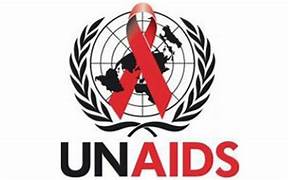As of my last knowledge update in January 2022, I don't have specific information on the UNAIDS report released on November 25, 2002. However, I can provide a general overview of UNAIDS and the global HIV/AIDS situation during that time. UNAIDS, the Joint United Nations Programme on HIV/AIDS, is a specialized agency of the United Nations dedicated to addressing the global HIV/AIDS epidemic. It was established in 1996 and plays a crucial role in coordinating international efforts to prevent new HIV infections, provide access to treatment and support, and alleviate the impact of the epidemic. In the early 2000s, HIV/AIDS was a global health crisis, affecting millions of people worldwide. It was a period marked by both challenges and significant advancements in the understanding and management of the disease. On November 25, 2002, a UNAIDS report would likely have provided an updated assessment of the global HIV/AIDS situation, including statistics on prevalence, new infections, and treatment access. During this time, efforts were underway to scale up HIV prevention strategies, increase access to antiretroviral therapy (ART), and reduce the stigma associated with the disease. The report may have highlighted progress made in certain regions or countries, as well as areas where challenges persisted. In the early 2000s, there was growing recognition of the importance of a comprehensive and multisectoral approach to tackling HIV/AIDS. This involved not only medical interventions but also addressing social, economic, and cultural factors that contribute to the spread of the virus. Key themes that might have been addressed in the 2002 UNAIDS report include: Global HIV/AIDS Statistics: The report would likely have presented updated statistics on the number of people living with HIV/AIDS, new infections, and AIDS-related deaths globally. Prevention Efforts: Information on prevention strategies, including education and awareness campaigns, condom distribution, and harm reduction programs. Treatment Access: Progress in providing access to antiretroviral therapy (ART) and efforts to make these life-saving medications more widely available, particularly in resource-limited settings. Challenges and Gaps: Identification of challenges and gaps in the global response to HIV/AIDS, such as disparities in access to treatment, stigma and discrimination, and the impact of the epidemic on vulnerable populations. International Cooperation: Recognition of collaborative efforts among governments, non-governmental organizations, and international agencies in the fight against HIV/AIDS. Reports from UNAIDS during this time were critical in shaping global policies and strategies to combat the HIV/AIDS epidemic. They provided a comprehensive overview of the progress made and the areas where intensified efforts were needed. The information presented in these reports contributed to advocacy, funding allocation, and program development to address the multifaceted challenges posed by HIV/AIDS on a global scale.
25 November 2002 U.S.A. — UNAids Report
